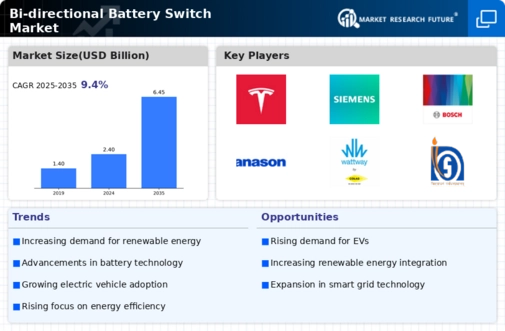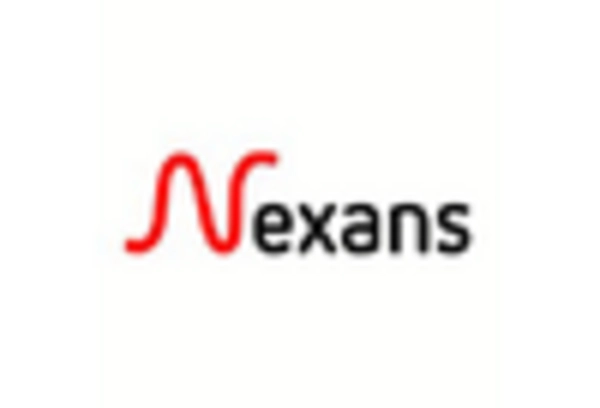Rising Demand for Renewable Energy Solutions
The Bi-directional Battery Switch Market is significantly influenced by the rising demand for renewable energy solutions. As countries strive to reduce carbon emissions and transition to sustainable energy sources, the need for efficient energy storage systems becomes paramount. Bi-directional battery switches play a critical role in enabling the integration of solar and wind energy into the grid, allowing for energy to be stored and utilized when needed. Market data indicates that the renewable energy sector is expected to grow at a compound annual growth rate of 8% through 2030, which will likely drive the demand for bi-directional battery switches. This trend underscores the importance of these switches in facilitating a more resilient and sustainable energy infrastructure.
Technological Innovations in Energy Management
The Bi-directional Battery Switch Market is experiencing a surge in technological innovations that enhance energy management systems. These advancements facilitate the efficient transfer of energy between batteries and electrical systems, optimizing performance and reliability. For instance, the integration of smart grid technologies allows for real-time monitoring and control of energy flows, which is crucial for applications in renewable energy systems. As energy storage solutions become more sophisticated, the demand for bi-directional battery switches is likely to increase, with projections indicating a market growth rate of approximately 10% annually over the next five years. This trend suggests that companies investing in advanced technologies will likely gain a competitive edge in the Bi-directional Battery Switch Market.
Growing Consumer Awareness of Energy Efficiency
The Bi-directional Battery Switch Market is also influenced by the growing consumer awareness of energy efficiency and sustainability. As individuals and businesses become more conscious of their energy consumption, there is an increasing demand for technologies that facilitate energy savings and reduce waste. Bi-directional battery switches enable users to optimize their energy usage by allowing for the storage and redistribution of energy, thus enhancing overall efficiency. Market trends indicate that consumers are willing to invest in energy-efficient solutions, with a significant portion of the population prioritizing sustainability in their purchasing decisions. This shift in consumer behavior is likely to drive the adoption of bi-directional battery switches, contributing to the market's growth.
Regulatory Support for Energy Storage Technologies
The Bi-directional Battery Switch Market benefits from increasing regulatory support for energy storage technologies. Governments worldwide are implementing policies and incentives to promote the adoption of energy storage systems, recognizing their role in enhancing grid reliability and supporting renewable energy integration. For example, tax credits and subsidies for energy storage installations are becoming more common, which could potentially stimulate market growth. As regulatory frameworks evolve, they are likely to create a more favorable environment for bi-directional battery switches, encouraging manufacturers to innovate and expand their product offerings. This supportive regulatory landscape may lead to a projected market expansion of around 15% over the next few years.
Increased Electric Vehicle Infrastructure Development
The Bi-directional Battery Switch Market is poised for growth due to the increased development of electric vehicle (EV) infrastructure. As governments and private sectors invest heavily in EV charging stations and related technologies, the need for efficient energy management solutions becomes evident. Bi-directional battery switches enable vehicles to not only draw power from the grid but also return energy back, thus supporting vehicle-to-grid (V2G) technologies. This capability is essential for balancing energy loads and enhancing grid stability. Recent reports suggest that the EV market is projected to reach a valuation of over 800 billion by 2027, indicating a robust demand for bi-directional battery switches as part of the broader EV ecosystem.

















Leave a Comment